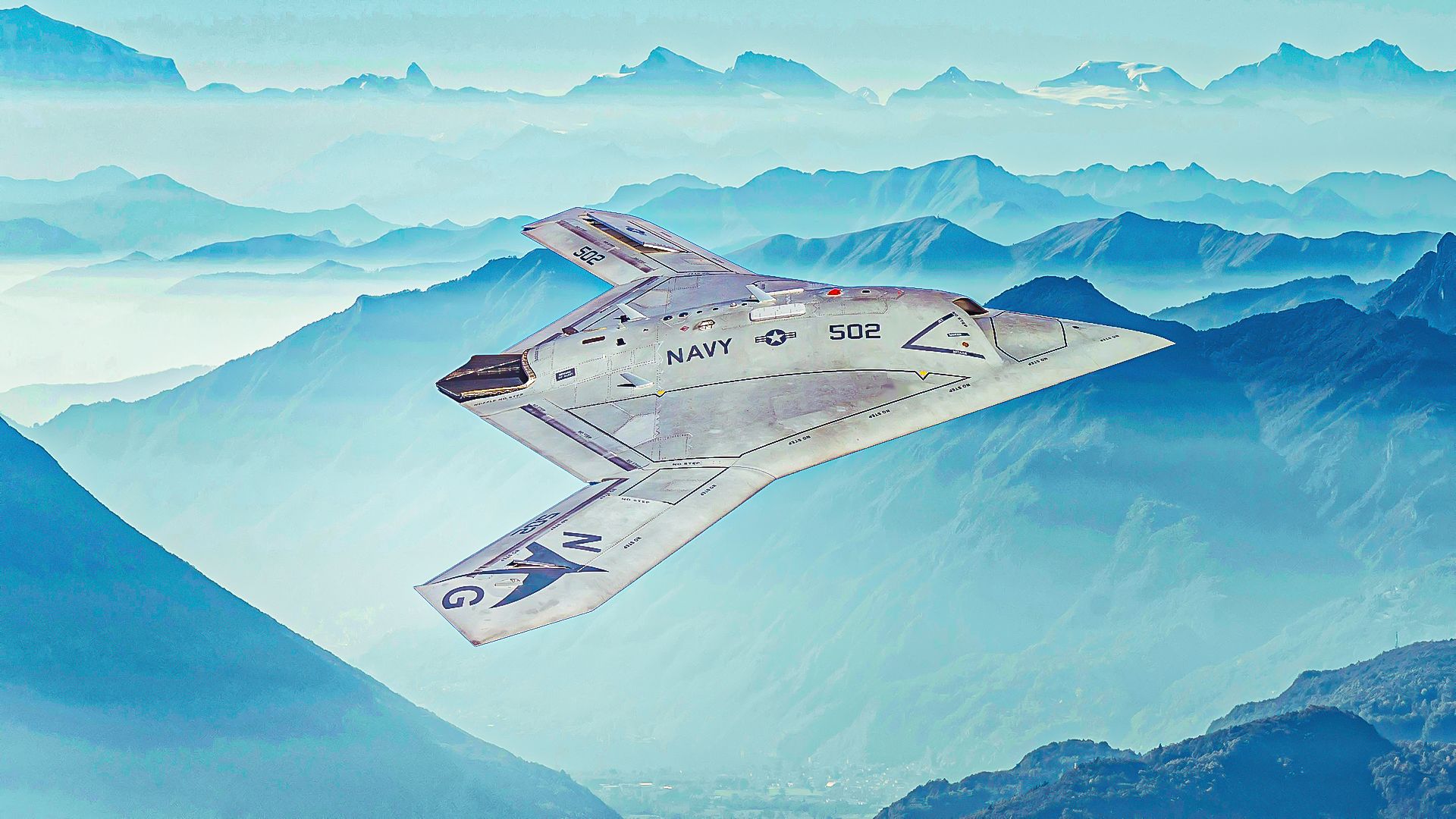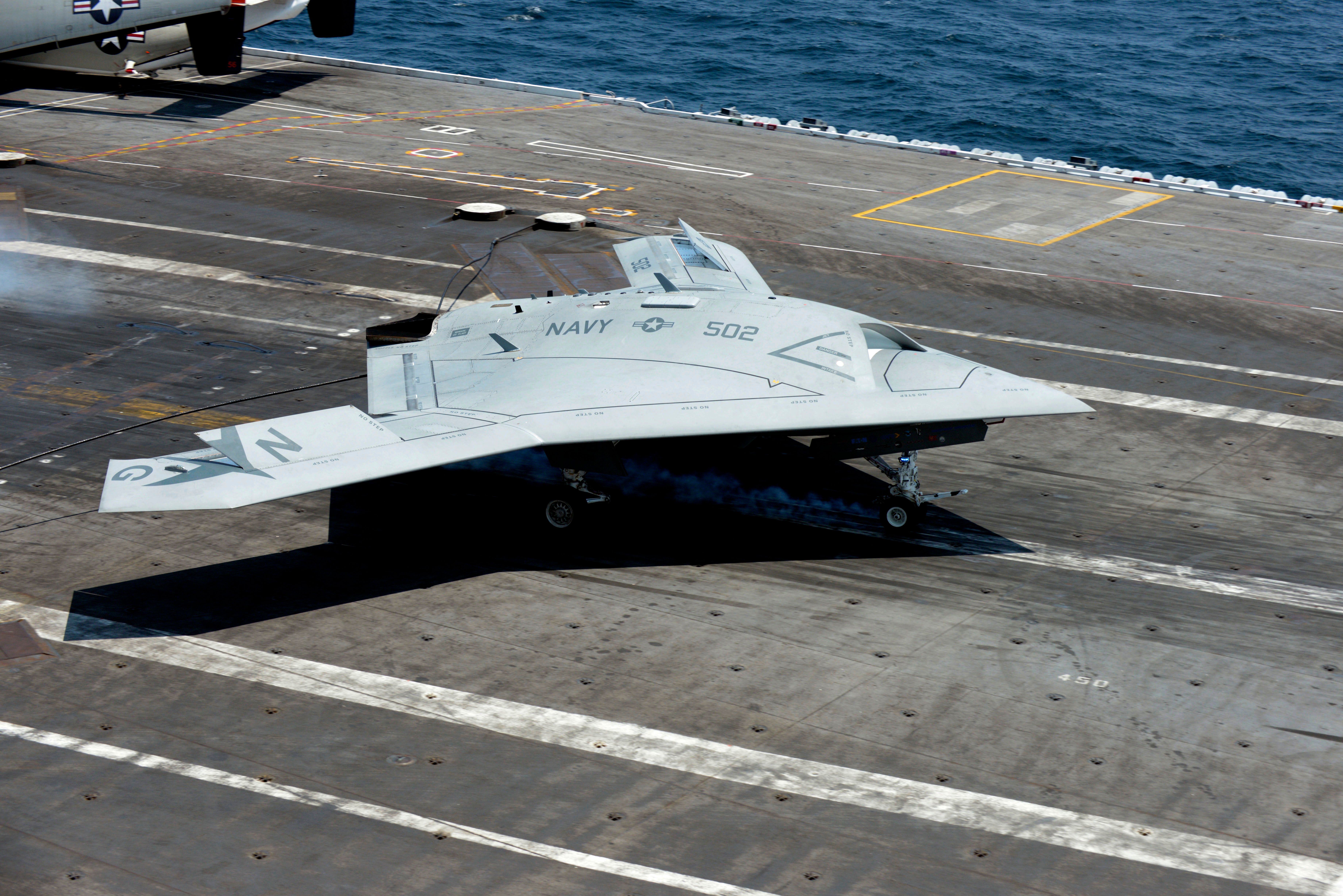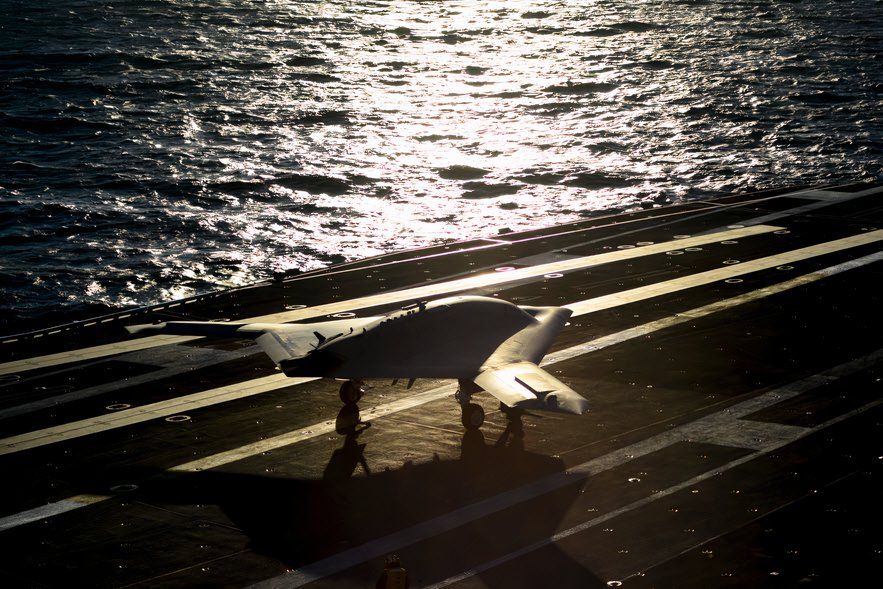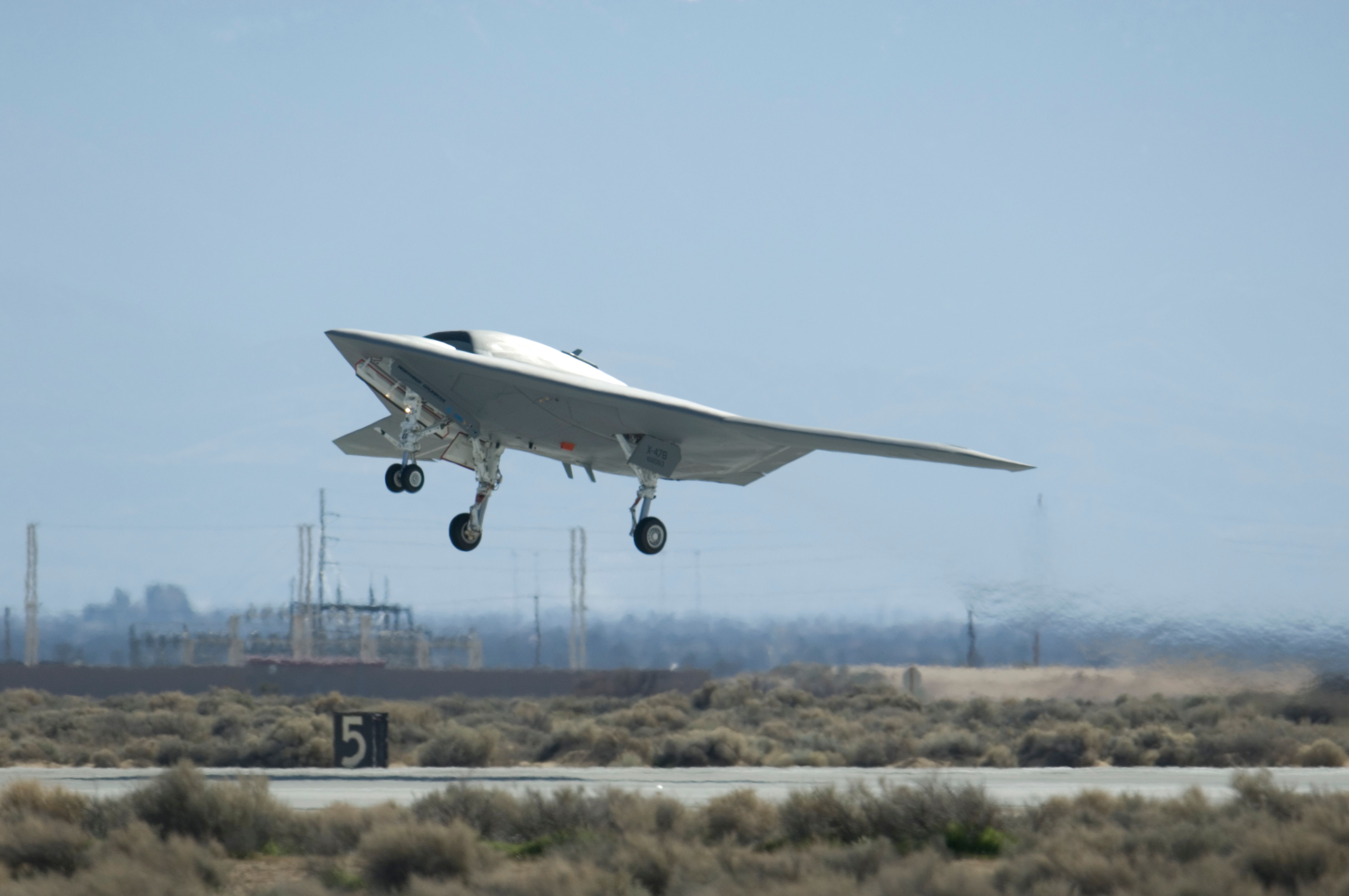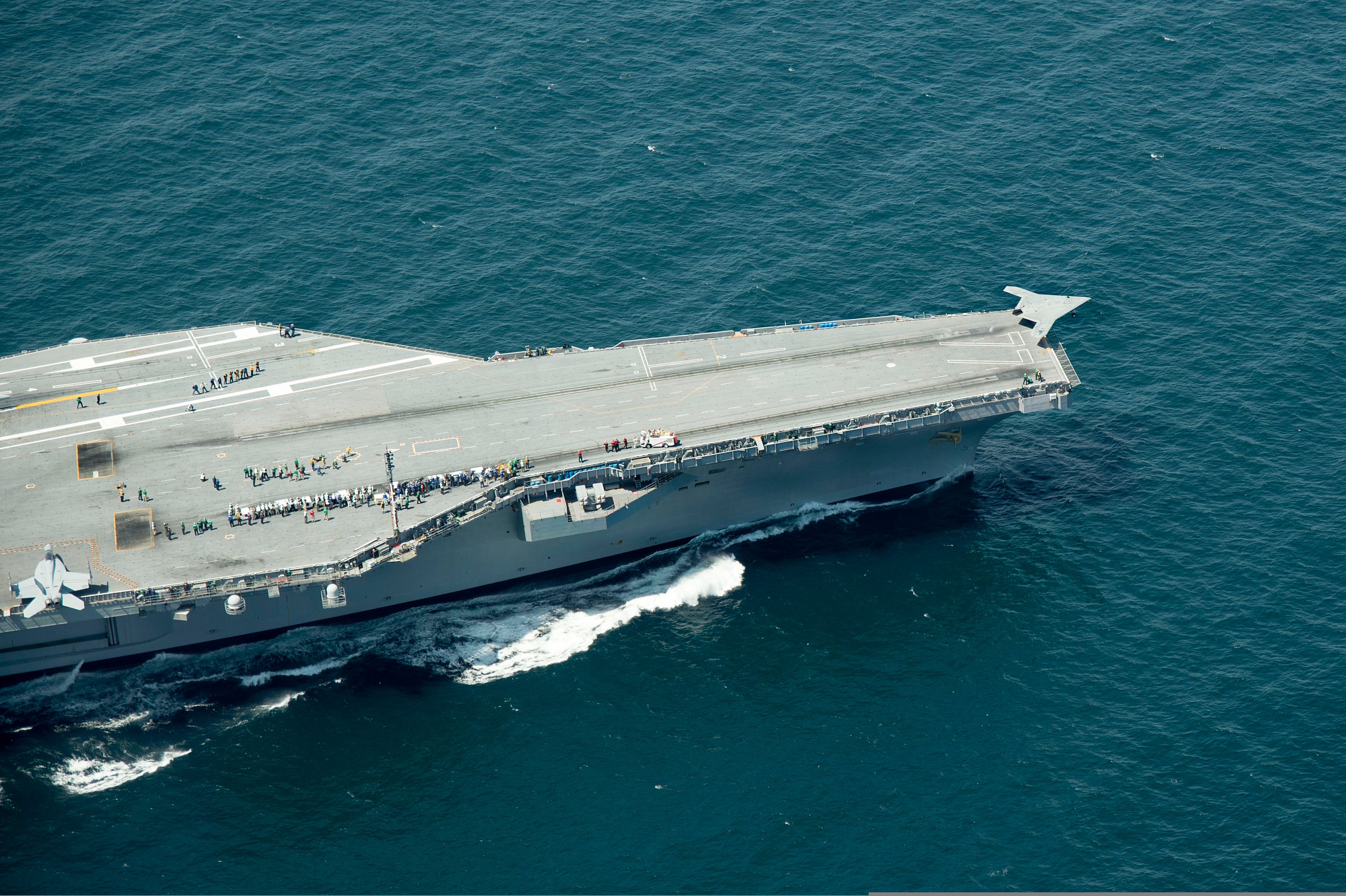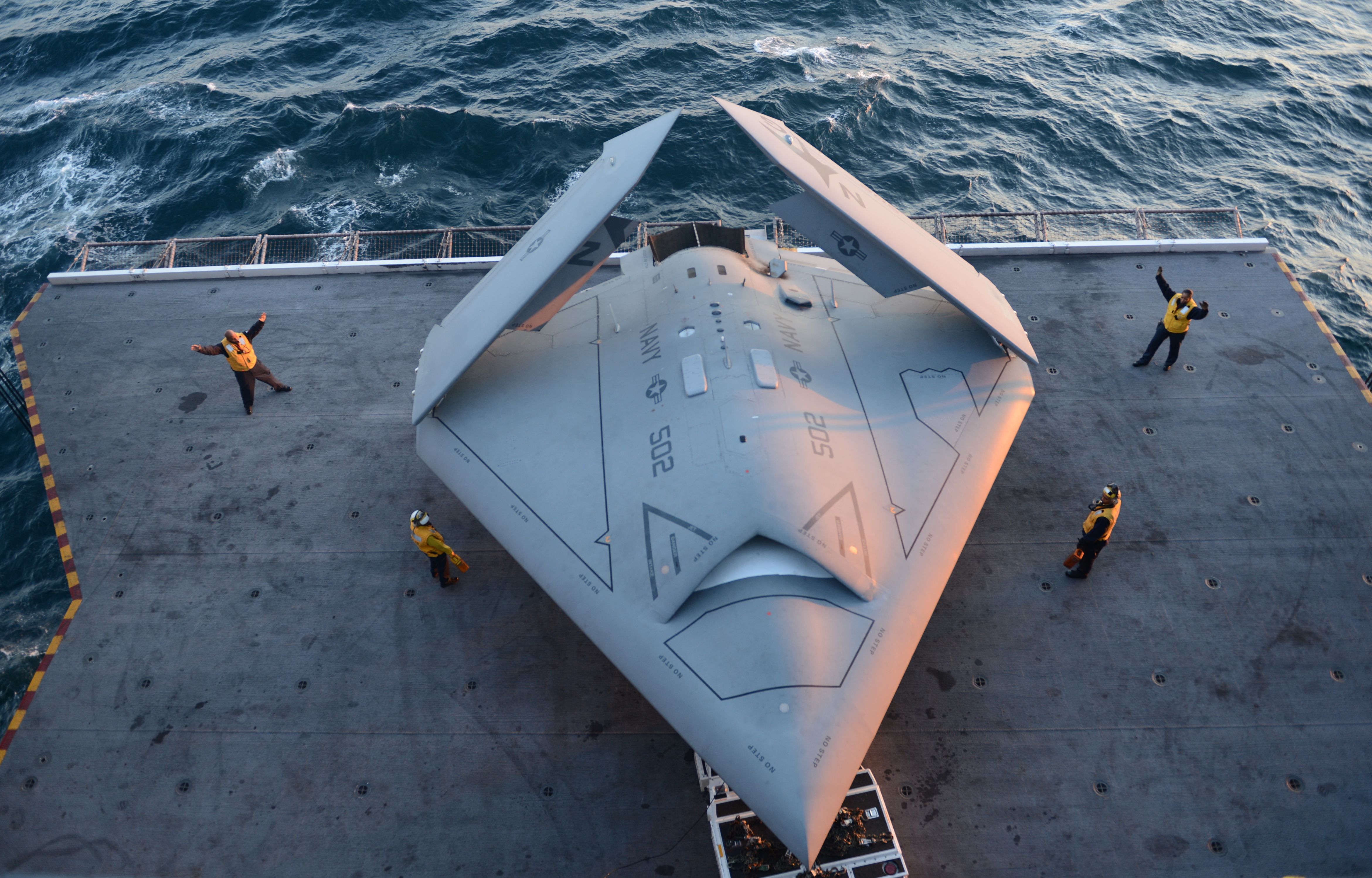The MQ-47 (X-47B) is an exciting leap forward in drone technology being developed by Northrop Grumman
for the US Navy. Poised to enhance naval operations significantly by augmenting the air warfare capabilities of the Navy’s F/A-18 Super Hornet strike fighter
squadrons. This advanced unmanned aerial vehicle features cutting-edge stealth
capabilities, and a unique tailless design, allowing it to operate undetected in contested environments. Equipped with sophisticated sensors and artificial intelligence, the Unmanned Combat Air System (UCAS) can gather real-time intelligence and conduct surveillance missions, ensuring that naval
forces have the upper hand before launching from the carrier’s deck. A crucial Intelligence-Surveillance-Reconnaissance (ISR) node that uses combat network technology to give the Carrier Strike Group
(CSG) a tactical advantage in any scenario.
Photo: Wikimedia Commons
The X-47‘s ability to integrate seamlessly with existing carrier strike group systems enhances situational awareness and allows for quicker decision-making. The MQ-47’s long endurance and versatile payload capacity enable it to perform various missions, from reconnaissance to electronic warfare. This drone
represents a new era in maritime strategy, empowering the Navy
to counter emerging threats while reducing risks to personnel.
With the MQ-47, the U.S. Navy is set to redefine modern naval warfare, ensuring readiness and superiority in dynamic maritime environments.
The X-47B unmanned combat air vehicle (UCAV), is designed to enhance the capabilities of the US Navy’s Carrier Air Wings, specifically the strike fighter squadrons that fly Boeing
F/A-18 Super Hornets. Below, are just a few force enhancements of the MQ-47 UCAS:
- Intelligence, Surveillance, and Reconnaissance (ISR): The X-47 can conduct ISR missions solo or before strike package sorties, providing real-time data and targeting information to aid F/A-18 pilots in their operations.
- Strike Coordination: The X-47 will support and execute strike missions in conjunction with fighter crews, allowing for coordinated attacks on targets and increasing the overall combat effectiveness of air operations.
- Force Multiplication: By operating alongside F/A-18s, the X-47 can expand its area of operations, distributing the workload and enhancing the air wing’s overall mission effectiveness.
- Electronic Warfare: The X-47 can be equipped with electronic warfare (EW) capabilities—offensive EW that can jam enemy radars or disrupt communications, creating safer operating environments for manned aircraft.
- Data Link and Targeting: It can serve as a data relay and target designator, improving situational awareness and supporting precision strike execution for F/A-18 pilots, allowing them to engage threats effectively.
- Risk Reduction: By conducting high-risk missions, such as penetrating enemy airspace for strikes or reconnaissance, the X-47 can reduce the risk to manned aircraft like the Super Hornet and prevent loss of life to aircrew in the event of tragedy.
Integrating the X-47 with US Navy strike fighter squadrons represents a significant advancement in Naval Aviation
, leveraging unmanned systems to enhance the effectiveness and safety of crewed aircraft.
Photo: Wikimedia Commons
Unmanned Combat Air System
The US Navy’s Unmanned Combat Air System (UCAS) program aimed to develop a next-generation unmanned combat air vehicle capable of operating from aircraft carriers. The concept was driven by the need for enhanced operational flexibility, reduced risk to pilots
, with greater ability to conduct missions in contested environments.
UCAS Mission Intent:
- Autonomy: The UCAS will operate autonomously, capable of taking off, flying, and landing without direct human control, which is critical for complex carrier operations.
- Stealth: A primary design consideration was to minimize radar cross-section, allowing the vehicle to penetrate enemy defenses undetected, making it suitable for high-risk strike missions.
- Multi-Role Capability: The X-47B is intended to perform a variety of missions, including precision strikes, intelligence, surveillance, reconnaissance (ISR), and electronic warfare, thus enhancing overall fleet effectiveness.
- Carrier Compatibility: Designed specifically for carrier operations, the UCAS needed to meet stringent requirements for launch and recovery on aircraft carriers, including being robust enough for harsh maritime conditions.
- Interoperability: The system was intended to work seamlessly with existing naval aviation platforms, enabling coordinated operations with manned aircraft, thus enhancing mission success through integrated tactics.
The UCAS program sought to revolutionize naval aviation, integrating unmanned systems into the fleet to complement and enhance manned operations.
Photo: Wikimedia Commons
Drones at Sea
The Northrop Grumman X-47B, developed for the US Navy, marked a significant advancement in unmanned combat air vehicle (UCAV) technology
. The project began in 2001 under the Navy’s UCAV program, with the goal of creating an autonomous system capable of conducting carrier-based operations. Grumman was selected to design and build the X-47B, leveraging expertise from previous programs like the RQ-3 DarkStar.
Photo: Wikimedia Commons
The Navy’s X-47B Unmanned Combat Air System Demonstration (UCAS-D) team received the 2013 Robert J. Collier Trophy at the U.S. National Aeronautic Association awards ceremony April 9, 2014. Rear Adm. Mat Winter, who oversees the Program Executive Office for Unmanned Aviation and Strike Weapons, was quoted:
“We are honored the X-47B program was selected to receive the most prestigious award in the aviation industry,” …“[X-47B UCAS is] a breakthrough technology that will impact naval aviation for years to come,” … “It’s a unique opportunity to be part of something that changes history and I can proudly say this team has done that.”
Initial phases focused on concept development and design, emphasizing stealth, range, and payload capacity. The X-47B’s flight control systems were designed to allow autonomous operations, enabling it to take off, land, and navigate without direct human intervention. The program concluded in 2014, having demonstrated significant advancements in unmanned technology, paving the way for future
developments in naval aviation and the integration of unmanned systems in combat operations. The X-47B was a crucial stepping stone for future naval UCAV
designs.

